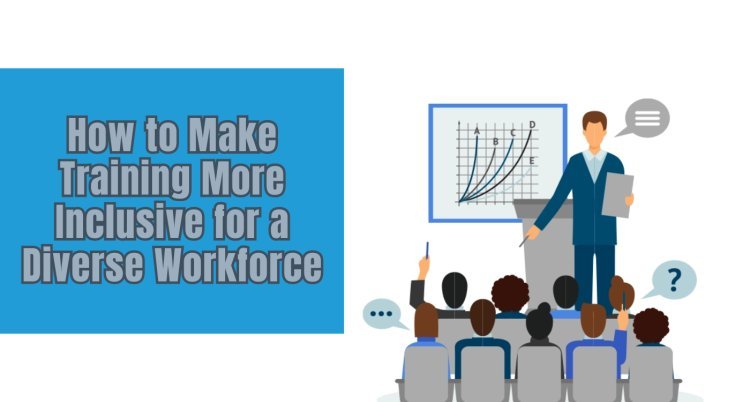How to Make Training More Inclusive for a Diverse Workforce
Learn how to make corporate training more inclusive for a diverse workforce with accessible learning formats, cultural sensitivity, and personalized training methods.

In today’s globalized business environment, diversity in the workplace is more prevalent than ever. Companies employ individuals from different cultural backgrounds, age groups, abilities, and learning preferences. While diversity brings innovation and fresh perspectives, it also presents challenges when it comes to corporate training companies in Mumbai. A one-size-fits-all training approach no longer works, as employees have unique needs that must be addressed to ensure an inclusive learning experience.
Inclusive training fosters a sense of belonging, boosts employee engagement, and enhances overall productivity. By adapting training programs to accommodate all employees, businesses can create an equitable learning environment that benefits both individuals and the organization as a whole. In this article, we explore practical ways to make training more inclusive for a diverse workforce.
1. Understand Your Workforce’s Diversity
The first step toward creating inclusive training programs is understanding the diverse backgrounds and needs of your workforce. Employees differ in terms of:
- Cultural backgrounds – Different cultural perspectives influence learning styles and communication preferences.
- Generational differences – Baby boomers, millennials, and Gen Z employees may have different levels of tech-savviness and preferred learning methods.
- Neurodiversity – Employees with ADHD, dyslexia, or autism may require alternative ways of processing information.
- Physical abilities – Some employees may have mobility challenges, hearing impairments, or visual impairments that require accessible learning formats.
- Language proficiency – Non-native speakers may benefit from translated materials or subtitles.
Gathering insights through surveys, feedback sessions, and HR data can help organizations tailor their training to meet the needs of all employees.
2. Offer Multiple Learning Formats
Not all employees learn the same way, so providing various training formats increases engagement and retention. Consider incorporating the following options:
- Visual learning – Infographics, videos, and charts help employees who absorb information best through visuals.
- Auditory learning – Podcasts, recorded lectures, and discussions cater to those who prefer listening over reading.
- Hands-on learning – Interactive workshops, role-playing, and real-world simulations help employees apply their knowledge practically.
- Text-based learning – Detailed documents, eBooks, and manuals support those who prefer reading and self-paced learning.
Blended learning—combining online courses, in-person training, and interactive activities—ensures that all employees have access to a training style that suits them.
3. Ensure Accessibility in Training Materials
To make training more inclusive, it’s essential to ensure that materials are accessible to employees with different abilities. Some best practices include:
- Using captions and transcripts for videos to support employees with hearing impairments.
- Providing screen reader-friendly documents by structuring text properly and including alt-text for images.
- Offering adjustable font sizes and contrast settings for employees with visual impairments.
- Ensuring physical accessibility for in-person training sessions, such as wheelchair-accessible venues and assistive listening devices.
By prioritizing accessibility, organizations create an inclusive learning environment where all employees can participate fully.
4. Emphasize Cultural Sensitivity and Inclusive Language
Corporate training should reflect cultural sensitivity and respect for all backgrounds. This means:
- Using inclusive language that avoids gendered terms, stereotypes, or culturally insensitive phrases.
- Providing diverse examples and case studies that reflect employees’ varied backgrounds.
- Avoiding assumptions about employees’ knowledge, experiences, or beliefs.
Trainers should also be educated on cultural competency to ensure that training sessions foster inclusivity rather than unintentionally alienating employees.
5. Leverage Technology for Personalized Learning
Technology has revolutionized training by making it more adaptable to individual needs. Many Corporate training companies now use artificial intelligence (AI) and learning management systems (LMS) to personalize training experiences. AI-driven platforms can:
- Adapt content based on an employee’s learning pace and preferences.
- Offer language translation tools for non-native speakers.
- Provide voice-assisted learning for those with reading difficulties.
By leveraging technology, organizations can create a more flexible and inclusive training environment.
6. Encourage a Safe and Inclusive Learning Space
For training to be truly inclusive, employees must feel comfortable expressing themselves and asking questions. Companies can create a welcoming environment by:
- Encouraging open discussions where diverse viewpoints are respected.
- Providing psychological safety so employees feel valued and heard.
- Addressing unconscious bias in training programs to ensure fair representation.
Trainers should facilitate an inclusive space where all employees feel empowered to participate without fear of judgment.
7. Offer Mentorship and Peer Learning Opportunities
In addition to structured training programs, mentorship and peer learning play a vital role in inclusivity. Pairing employees from different backgrounds allows for:
- Knowledge sharing between experienced and newer employees.
- Stronger workplace relationships that promote diversity and collaboration.
- Increased confidence in employees who may feel isolated due to their background or abilities.
When employees learn from each other, training becomes more engaging and meaningful.
8. Evaluate and Improve Training Programs Continuously
Inclusivity is an ongoing process. Companies must regularly assess their training programs to identify areas for improvement. This can be done by:
- Collecting feedback from employees about their training experience.
- Tracking engagement and completion rates for training sessions.
- Making data-driven improvements to ensure continuous inclusivity.
Working with Corporate training companies in Delhi that specialize in diversity and inclusion can also help businesses refine their training strategies for better outcomes.
Making training more inclusive is not just a matter of compliance—it’s a strategic advantage that fosters employee growth, engagement, and retention. By understanding workforce diversity, offering multiple learning formats, ensuring accessibility, and embracing cultural sensitivity, businesses can create training programs that benefit all employees. Leveraging technology, fostering mentorship, and continuously improving training methods further ensure that learning remains inclusive and effective.
With an inclusive training approach, companies can empower their diverse workforce to thrive, ultimately leading to a more innovative, productive, and successful organization.
What's Your Reaction?















